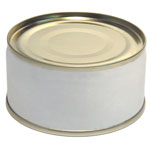My Financial Implosion: Emergency Food Supplies
 ‘œOne of the true tests of leadership is the ability to recognize a problem before it becomes an emergency.’ ‘“ Arnold H. Glasgow
‘œOne of the true tests of leadership is the ability to recognize a problem before it becomes an emergency.’ ‘“ Arnold H. Glasgow
Although our personal financial situation continues to improve since my wife was out of work earlier this year, my wife and I aren’t entirely sure that our financial position is completely secure. Despite the news reports that the nationwide recession is easing, we’ve seen too many signs of local problems to ignore. Our town’s newspaper is filled with foreclosure notices. One of our neighbors has been out of work for eight months and hasn’t been able to find a steady job. Another neighbor, a woman in her 20’s, told us that most of her friends are out of work.
Things, at least for the moment, appear to be steady for us. My wife has a part-time contract, good for several months. I have a nearly full-time contract, that’s scheduled to continue until the middle of 2010.
We won’t starve, unless things suddenly change.
That thought has been weighing on our minds for quite some time, as we’ve repeatedly seen how suddenly things can change. People in our neighborhood have unexpectedly lost their jobs, their health and even their homes, and we’ve realized that our tentative security could be lost just as quickly.
We’ve started to build an emergency food supply.
Although the good folks at the U.S. Department of Homeland Security, FEMA and the American Red Cross recommend having a two-week emergency food supply in case of a natural disaster, we’ve decided to build a much larger supply. We aren’t building a cache of food consisting of MREs just for emergencies; instead, we are creating a larder filled with supplies we’ll eat on an ongoing basis and replenish as they are consumed. If we experience a disaster, whether financial, man-made or natural, we’ll be ready.
As we’ve been building our food supply, we’ve learned several interesting lessons:
1. Buying in bulk can save a lot of money. At our local grocery store, my favorite brand of whole wheat bread costs more than $4 per loaf. In comparison, a 5-pound sack of flour from the very same store costs a little more than $5. Amazingly, a 25-pound sack of flour from our warehouse store costs just under $7. Sugar at the grocery store costs slightly more than $1 per pound. If we purchase it in bulk at the warehouse store, it costs closer to 50 cents per pound.
2. Made-from-scratch food tastes better. Since we’ve been building our bulk supplies of flour, beans, rice, and cornmeal, we’ve done a lot more cooking from scratch. I baked, for the very first time, a homemade yellow cake and it tasted far better than the boxed cake mix I usually prepare. We’ve also made several loaves of white, wheat and corn bread, all of which were much better-tasting than their store-bought equivalents.
3. Baking from scratch doesn’t necessarily take longer than using a mix. I’ve found that many baked items, such as cakes, cornbread and biscuits, don’t take substantially longer to make. Although there is a bit more measuring, it isn’t any more difficult than dumping pre-mixed ingredients from a box into your bowl.
4. It’s easier to avoid unwanted ingredients when cooking from scratch. As we’ve built up our larder, we’ve noticed that many of the mixes and pre-packaged foods we routinely use are filled with things we’d rather not eat. By making our own food, we can easily avoid partially hydrogenated oils, preservatives, artificial flavors, colors and additives with unpronounceable names.
In the coming weeks, my wife and I will be working on increasing our stock of supplies so that we’ll feel even more secure. Even though we both agree that having an emergency fund in the bank is important, we also realize that having food supplies on hand gives us even more peace of mind.
Next in series: Stocking the Larder
Photo credit: stock.xchng


Alex, I think food storage is always a great idea. I come from a Mormon background, so this is pretty much embedded in my DNA.